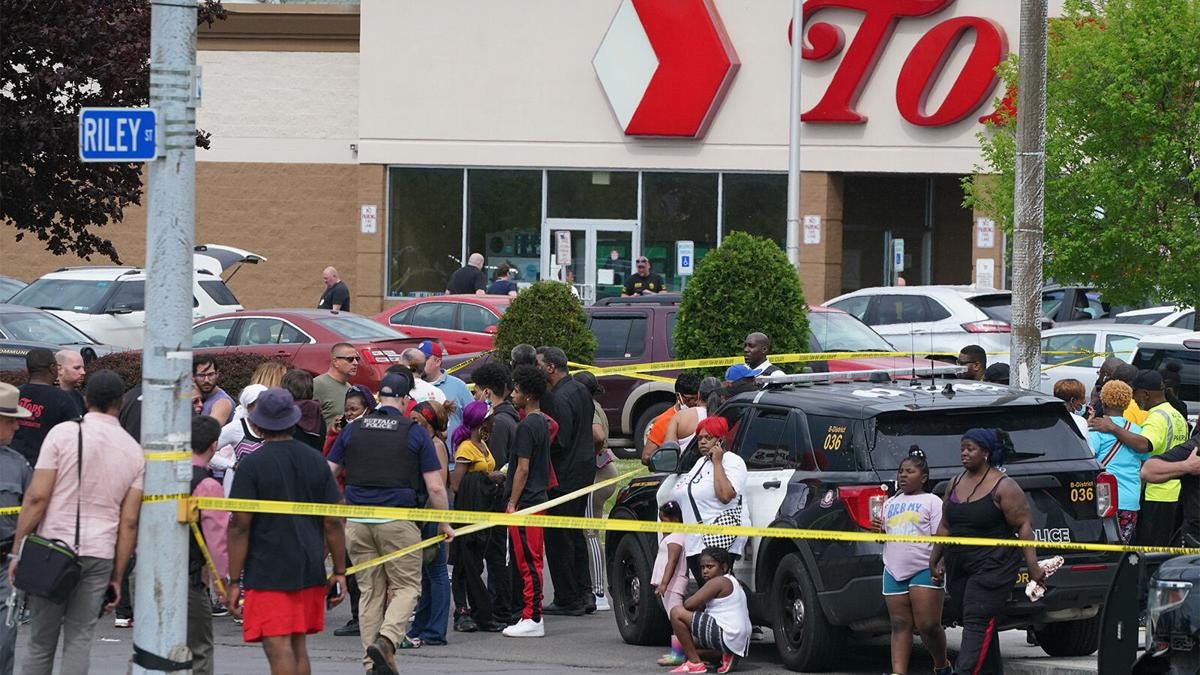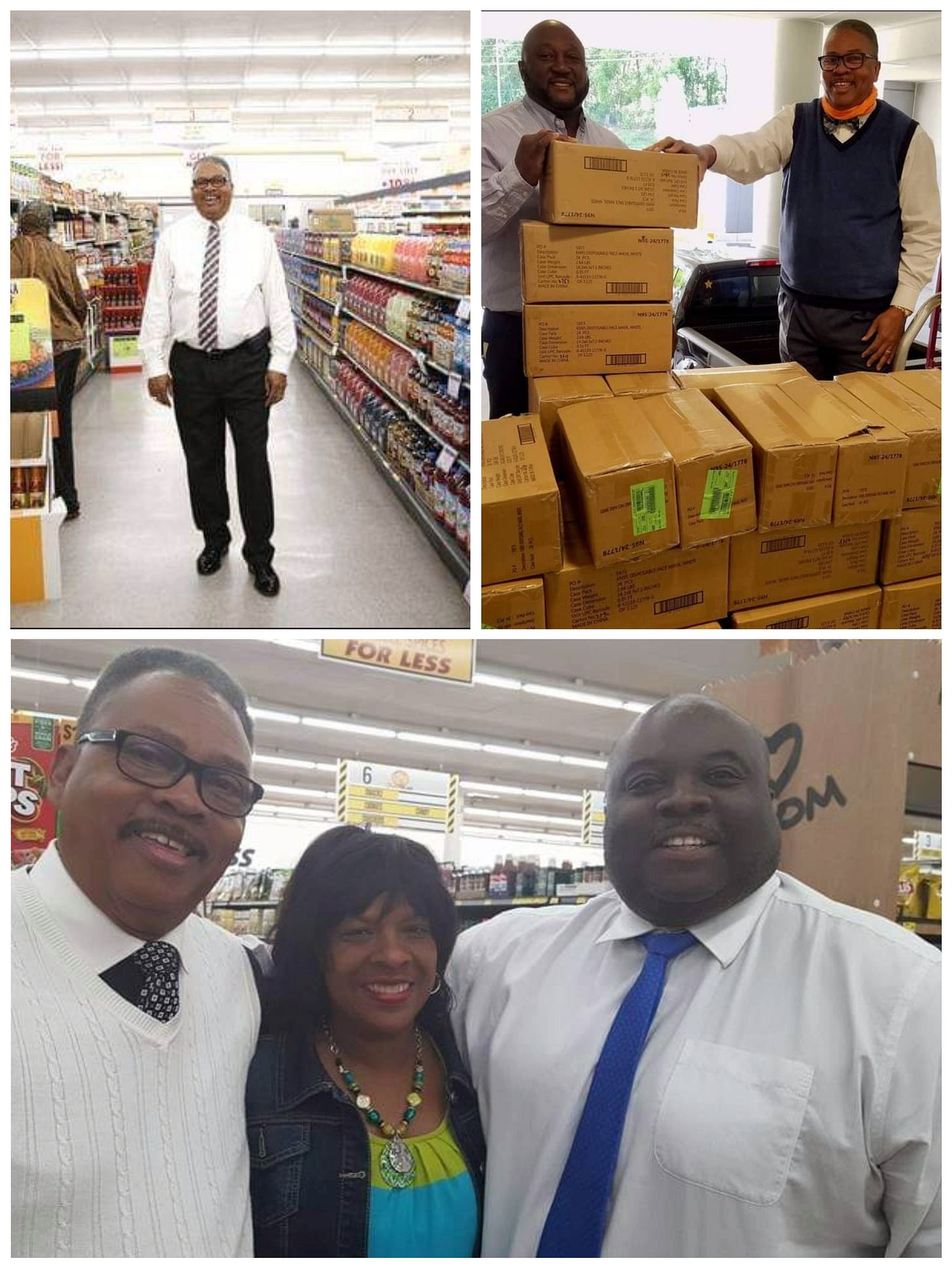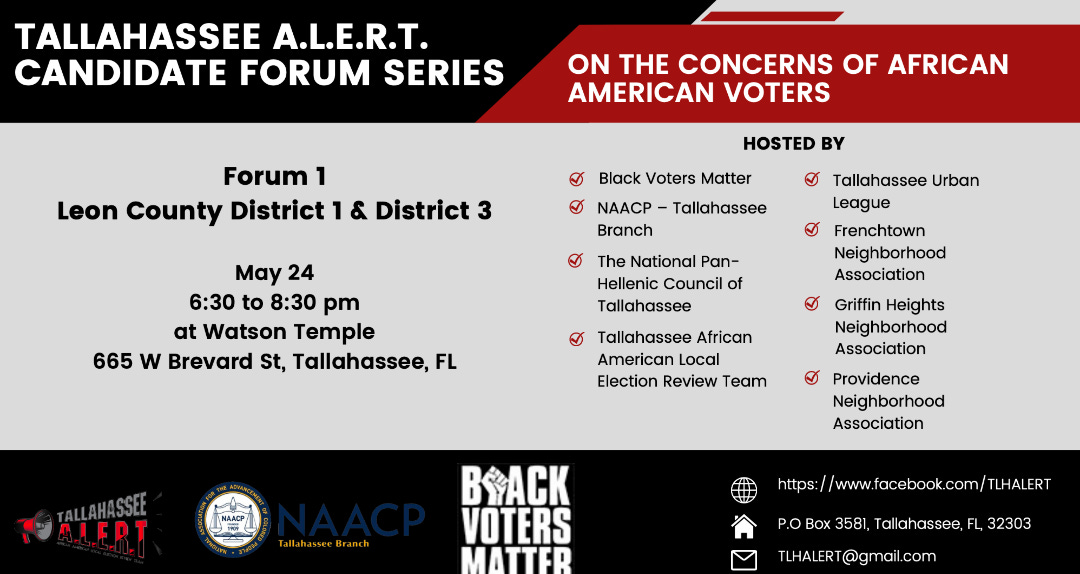How the Buffalo mass murder exposed systemic racism in urban planning
The Tuesday Talking Points!
Yesterday, my mother handed me an article written by Jacob Bogage of the Washington Post entitled "Buffalo's East Side was a food desert—the shooting made things worse" and, suffice it to say that the article hit home in a very personal way (as I will delve into below).
The piece chronicles a side of racism that rarely gets noticed until some violent act(s) occur, like the shooting last month at the Tops Friendly Market in Buffalo that left 10 Blacks dead—and an 18-year-old white male charged with 10 counts of first degree murder.
As you probably recall, Buffalo police indicated that the shooter had carefully studied the city's East Side so that he could inflict maximum carnage among "soft targets," meaning, innocent and unarmed targets who could not fight back. But Bogage's article goes deeper by tracing “why” that area was selected, specifically with regards to the history of Buffalo's Route 33, a highway that he describes as having torn "through the heart of Buffalo’s East Side, a scar in a segregated city that nearly demolished a Black community. The highway devastated the economies of Black Buffalo’s commercial centers and sucked value from historic real estate, spitting grime and grease onto the windows of neighboring homes."
Honestly, the last paragraph describes just about every racially diverse city in America and proves, as I often write, that while Jim Crow in the Deep South was horrific, that racism in the Midwest, like Chicago, and up North, like Buffalo, was equally devastating.
When I write or speak of this form of racism, I don't mean the garden variety "I hate (insert racial group)" type of bias. No, I am writing about racism that really hurts—the systemic type that impedes progress based upon the color of one's skin.
Now, systemic racism through the years has included the underfunding and sub-standard maintenance of predominantly Black public schools by predominantly white local leaders; or, banking institutions refusing to extend loans and credit to Black patrons; or, hospitals that refused to treat Black patients; or, as was the case in Buffalo, white civic leaders choosing to run a highway right through a thriving Black area and, by so doing, lowering property values, taking ownership of Black homes through the eminent domain process, and eliminating thriving Black businesses (like grocery stores) to boot.
As things currently stand, with the Tops Friendly Market in Buffalo still closed due to the mass murder scene that's being investigated, the predominantly Black East Side is locked in a "food desert," a phrase which means that local residents do not have ready access to fresh meats, fruits, and vegetables.
In his article, Bogage quotes Dr. Henry-Louis Taylor, a professor of urban planning at the University of Buffalo, who says: "We like to call this 'food apartheid' because the absence of these grocery store is reflective of the range of policy choices and decisions that public and private sector leaders made..."
Ouch!
Again, Dr. Taylor's words are true for just about every racially diverse city in America! On a personal level, several months ago I learned that when the federal government was contracting with the individual states to create the interstate highway system in the 1950's, that when I-10 was being built to run from Jacksonville, Florida all the way to Los Angeles, California, that Tallahassee local leaders, then in the midst of Jim Crow, were considering running the interstate through Tallahassee's Southside. Had that route been chosen, the highway would have cut through the southern portion of Florida A&M University's campus and separated it from (or destroyed) Black neighborhoods like University Park, Jake Gaither Park, Holton Street public housing apartments, and the Callen neighborhood where I was born and raised!
That I-10 was ultimately located in a then less populated northern portion of Tallahassee was not due to any "kumbaya" moment, but because local Black neighborhood leaders were joined by a number of white leaders, many of whom lived on the eastern half of Southside until integration took root in the late 1960's—and "white flight" began in earnest.
While I-10 through the Southside was nixed, Tallahassee City leaders did build not one, but two water treatment facilities in the westernmost (read-Black) area—facilities that emitted noxious fumes that left the air smelling putridly ripe during the hot summer months throughout my childhood. The city dump, also located on the Southside, is still in full effect and is adjacent to the very youth football fields where my own pre-teen daughter was a tackle football cheerleader just a few years ago!
Thus, the environmental racism piece hits home to me, as does my memory that Tallahassee's Southside had only two grocery stores for 30,000+ residents during my youth (Winn-Dixie and Warehouse Foods). Even today, thanks to my friends (and Hobbservation Point supporters Roy and Jackie B. Moore), the Southside has one full-service Piggly Wiggly within a two mile radius of the aforementioned densely populated Black neighborhoods!
Hobbs circa 2016 with my friends Roy and Jackie B. Moore, owners of Piggly Wiggly, when their Tallahassee Southside store opened…
The lack of access to food and medicine is why I was LIVID two years ago when Florida Republican Gov. Ron Desantis was funneling Covid vaccines through Publix supermarkets because I knew all too well that Publix is not accessible to many Blacks (and poorer whites and Latinos) across the Sunshine State.
You see, when I grew up in Tallahassee, there was no Publix on the Southside (there was one off of Ocala Road and Pensacola Street on the Westside). Today, there is one (1) that's located in the affluent Southwood neighborhood, and another that's much further down Crawfordville Highway (which is not that close to any of the Black Southside neighborhoods). Thank goodness for the Bond Community Health Center and Florida A&M for providing vaccines to nearby residents who would not have had easy access to Desantis’s beloved Publix supermarkets!
One of the truest cliches in the American English lexicon is the quip, "all politics is local," which was popularized by former U.S. Speaker of the House Tip O'Neill (D-Ma) in the 1980's. Meaning, the only way for food deserts, zoning, road fixing and extensions, and the like can be rectified is by active engagement in the political process.
A few weeks ago, I was asked by Tallahassee NAACP President Mutaqee Akbar to moderate a campaign forum featuring candidates for Leon County Commission Districts1 and 3. In the District 1 race, longtime incumbent Bill Proctor is facing a challenge from a young progressive leader, Terrance Barber.
Commissioner Bill Proctor and challenger Terrance Barber at the forum that I moderated last month
When speaking about systemic issues that impact Black neighborhoods, Commissioner Proctor noted that when the predominantly white and affluent North Leon County communities want something done, they show up in droves at meetings—for months on end—until whatever that it is they want addressed is addressed. Mr. Proctor's point was not lost on me that local engagement is critical, nor was Mr. Barber's point that elected leaders must fill in the gaps when neighborhoods lack the organization or drive to get matters handled.
But knowing is half the battle and, to that end, as we mourn those killed in Buffalo and their neighbors who exist now in a food (and pharmacy) desert, may we also remember to sweep around our own front doors and work to address these same issues in the cities and counties in which we live.
Mental Health Moment
One of my favorite Hobbservation Point supporters, podcast guests, and friends is Dr. Ericka Goodwin, a Spelman College alumna who is a Harvard trained double board-certified psychiatrist. If you haven't subscribed to her podcast, "Better with Dr. Ericka," you should because the Sista brings a calming and rational voice to these irrational times in which we all are fighting the Covid blues—and witnessing so much death and destruction across the globe.
Click on the above link to her latest podcast about mental health in these turbulent times—and enjoy!
Thank you for subscribing to the Hobbservation Point—have a wonderful day!









Thanks for sharing this. I shared about a report I heard that the residents of this Buffalo neighborhood had to fight to get the Tops grocery in the neighborhood and now they have nothing. The a$$ who committed these murders was methodical. That is not the act of some one who is mentally ill.
Outstanding article!!!